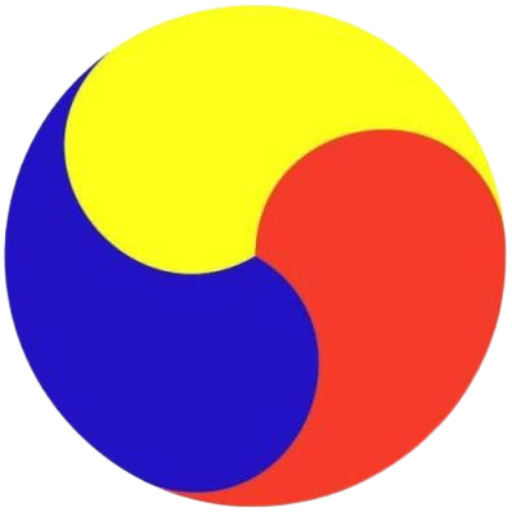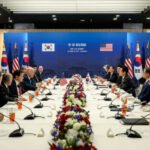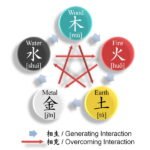Introduction to the Joseon Dynasty
The Joseon Dynasty, also known as the Joseon Dynasty, represents a pivotal era in Korean history that spanned approximately five centuries from 1392 to 1910. Established by Yi Seong-gye, who later became known as King Taejo, this dynasty marked the beginning of a significant transformation in Korean society, culture, and governance. One of the most notable achievements of the Joseon Dynasty was the establishment of Confucianism as the state ideology, influencing various aspects of life, including education, family structure, and political philosophy.
Throughout its long reign, the Joseon Dynasty played a crucial role in shaping Korea’s national identity and cultural framework. The dynasty’s governance was characterized by the implementation of strict class hierarchies and a system of bureaucracy, which facilitated the centralized control of the state. This period witnessed essential developments in Korean arts and sciences, resulting in cultural flourishing, particularly in literature, painting, and ceramics. Innovations such as the creation of the Korean script, Hangul, by King Sejong in the 15th century during the height of the dynasty further highlighted its commitment to societal improvement and accessibility to education.
Key events during the Joseon Dynasty include the Imjin War (Japan’s invasions of Korea), the introduction of Western ideas through contact with European missionaries, and the eventual decline of the dynasty due to internal strife and external pressures. Each of these transitional periods provides insight into how the Joseon Dynasty not only adapted to challenges but also laid foundational concepts that still resonate in contemporary Korean society. Understanding the significance of this dynasty is essential for appreciating the multi-faceted influences it has had across various domains, shaping Korea’s history for generations to come.
Political Structure and Governance
The Joseon Dynasty, which reigned from 1392 to 1910, is noted for its complex political organization, characterized by a centralized bureaucratic system. This system was designed to maintain control and order within the vast territories of Korea during its rule. The monarchy held supreme power, with the king serving not only as the sovereign ruler but also as the embodiment of national unity. Beneath the king were various administrative levels, comprising officials who managed local governance, tax collection, and law enforcement.
A significant aspect that shaped the governance of the Joseon Dynasty was Confucianism. This philosophical system became the bedrock of political ideals and practices, influencing the moral framework within which officials operated. Confucian principles emphasized morality, proper conduct, and the importance of education, thereby creating a well-founded meritocracy. Officials were chosen based on their knowledge of Confucian texts and their ability to apply these principles in administration. This approach was crucial in legitimizing the authority of the dynasty and promoting social harmony.
Notable leaders such as King Sejong the Great exemplified the ideals of Joseon governance. His rule saw the introduction of the Korean script, Hangul, which aimed to improve literacy among common people, reflecting a governance model that prioritized public welfare. Similarly, King Taejong, the dynasty’s third ruler, is recognized for consolidating royal authority and establishing a stable bureaucratic system that facilitated effective governance. These leaders played critical roles in shaping the policies and administrative methodologies that characterized the Joseon era.
The centralized bureaucratic approach, underpinned by Confucian ideology, greatly contributed to the political stability of the Joseon Dynasty. It laid the groundwork for effective policy-making, which allowed the dynasty to thrive for over five centuries, fostering a legacy that would influence subsequent Korean governance structures even in contemporary times.
Cultural Developments and Artistic Expression
The Joseon Dynasty, which lasted from 1392 to 1897, was a period marked by significant cultural advancements that shaped the artistic landscape of Korea. During this era, literature flourished with the development of distinct genres, including poetry and prose. One noteworthy literary achievement was the creation of Hyangga, traditional Korean songs that expressed the sentiments and spiritual life of the people. Renowned figures such as Kim Si-seup and the famous poet Hwang Jini brought a sense of depth and sophistication to Korean literature through their works, reflecting the complexities of societal values during this time.
In addition to literature, painting saw remarkable developments, characterized by the emergence of distinctive styles that combined Chinese influences with indigenous Korean themes. The most notable form was the Suhwa (literary painting), which often portrayed scholarly subjects, landscapes, and natural scenes. Artists like An Gyeon, who created famous works such as “Dream Journey to the Peach Blossom Land,” exemplified the integration of philosophical concepts and visual artistry, resonating deeply with the Confucian ideals that permeated Joseon society.
The performing arts also underwent substantial evolution, with traditional forms like Pansori, a storytelling musical narrative, gaining popularity. Pansori performances became a vital means of conveying historical events and social commentary, providing audiences with a blend of entertainment and education. Notable masters, such as Shin Jae-hyo, contributed to the development of this art form, further emphasizing its importance within the cultural fabric of Joseon. Overall, the artistic expression during the Joseon Dynasty was not merely a reflection of individual creativity; it served as a profound manifestation of the values, beliefs, and historical experiences of the Korean people. These cultural developments forged a legacy that continues to influence contemporary Korean arts and culture.
Scientific and Technological Innovations
During the Joseon Dynasty, which spanned from 1392 to 1910, considerable emphasis was placed on scientific and technological advancements that significantly influenced various aspects of daily life. Among the most notable contributions was the improvement in agricultural techniques, which laid the groundwork for enhanced productivity. The dynasty saw the development of innovative irrigation systems and the introduction of new rice varieties, which helped to stabilize food supply and mitigate famine risks. Additionally, agricultural writings and treatises emerged, offering systematic guidance on effective farming practices.
Another remarkable area of achievement was astronomy, where Korean scholars made notable strides. The dynasty’s dedication to astronomy was exemplified by the creation of the water clock, called the ‘nanjang’, which facilitated the precise measurement of time. Furthermore, the establishment of the Hall of Worthies, or ‘Jiphyeonjeon’, provided a conducive environment for scientific inquiry, enabling scholars to draft celestial charts and observe solar and lunar eclipses. The precise observations made during this period laid a strong foundation for future astronomical studies in Korea.
In the realm of medicine, the Joseon Dynasty witnessed significant advancements, particularly in traditional Korean medicine. The compilation of texts such as ‘Dongui Bogam’, a comprehensive medical encyclopedia, synthesized empirical knowledge, demonstrating a commitment to empirical and holistic healthcare approaches. Treatments incorporating herbal remedies and acupuncture gained further refinement during this time, emphasizing the importance of balancing natural elements in promoting health. These innovations in medicine not only showcased the dynasty’s dedication to scientific inquiry but also enriched the health practices that would influence subsequent generations.
Overall, the Joseon Dynasty stands out as a period marked by scientific exploration and technological innovations that not only advanced agriculture, astronomy, and medicine but also laid crucial groundwork for modern developments in these fields.
Social Structure and Daily Life
The Joseon Dynasty, spanning approximately five centuries from the late 14th century to the late 19th century, established a complex social hierarchy that profoundly influenced the daily lives of its citizens. This social structure was primarily stratified into four main classes: the yangban (nobility), chungin (middle class), sangmin (commoners), and cheonmin (lowborn). Each class had specific roles, rights, and obligations, which shaped the routines and experiences of individuals within these groups.
The yangban held significant privilege, engaging in governance and cultural leadership, and often adhering to Neo-Confucian principles that underscored their social status. Education was paramount for the yangban, with many pursuing scholarly achievements, which further solidified their elevated standing. In contrast, the chungin, consisting of skilled laborers and minor officials, enjoyed some respect but lacked the full privileges of the yangban. Their daily lives often revolved around trade or education, contributing to a burgeoning economy in urban centers.
Meanwhile, sangmin, the majority of the population, typically worked in agriculture, while cheonmin, who were relegated to menial jobs, faced societal stigmatization. Gender roles were also distinctly defined, with women largely confined to domestic responsibilities. The Confucian ideal emphasized women’s roles as mothers and wives, often limiting their educational opportunities and societal participation. Clothing also reflected these social divisions, as the yangban donned elaborate garments adorned with symbols of their status, while commoners wore simpler, functional attire.
Family structure during the Joseon Dynasty was influenced by Confucian values, promoting filial piety and ancestral reverence. Households often prioritized male lineage, impacting inheritance and family hierarchies. Through examinations of customs, clothing, and family structures, one can gain insight into the multifaceted daily lives experienced across the social spectrum during this historical era.
Religious Beliefs and Practices
The Joseon Dynasty, which lasted from 1392 to 1897, was marked by a rich tapestry of religious beliefs and practices that significantly influenced its cultural landscape. At the forefront was Confucianism, which was adopted as the state ideology. This philosophy emphasized moral integrity, the importance of family, social hierarchy, and proper conduct in personal and public life. Confucian principles deeply permeated education and governance, fostering a societal structure that promoted respect for authority and filial piety. Government officials were selected based on their knowledge of Confucian texts, thereby intertwining education and ethics with the administrative framework of the dynasty.
Buddhism also played a vital role during the Joseon period, despite facing considerable marginalization as Confucianism gained prominence. While the ruling elite predominantly adhered to Confucian ideals, the broader populace continued to practice Buddhism, which was rooted in a deep spiritual tradition. Buddhist temples served as sanctuaries for community gatherings and rituals, including the well-known “Buddha’s Birthday” celebrations. These events featured various ceremonies aimed at promoting peace and enlightenment, illustrating the coexistence of religious traditions amid the dominant Confucian ideology.
In addition to these major religions, shamanistic practices remained prevalent, particularly among rural communities. Shamanism involved rituals directed towards ancestral spirits, nature deities, and other supernatural beings, which represented a connection to the spiritual realm. Festivals such as “Shinbang” were occasions for vibrant celebrations, where shamans conducted ceremonies to ensure bountiful harvests and communal welfare. The integration of shamanism within the religious framework of the Joseon Dynasty not only fostered a sense of identity among the common people but also highlighted the multi-faceted nature of religious expression during this period.
Diplomacy and International Relations
The Joseon Dynasty, which ruled Korea from 1392 to 1910, engaged in a complex web of diplomacy and international relations, primarily with its neighboring countries, Japan and China. The dynasty’s foreign policy was heavily influenced by Confucian principles, which prioritized peace and stability. As a result, Korea positioned itself as a tributary state to China, reflecting its recognition of Chinese superiority, while simultaneously attempting to maintain its own sovereignty.
Throughout the Joseon period, numerous diplomatic missions were sent to China. These missions often served to pay tribute to the Ming and Qing dynasties, secure trade agreements, and foster political relationships. Notably, the communication with China was pivotal in shaping Korea’s cultural and political identity, leading to significant influences in areas such as philosophy, literature, and governance. Conversely, relations with Japan presented more challenges, marked by both diplomatic exchanges and military conflicts. The invasions of Korea by Japan in the late 16th century, known as the Imjin War or Japanese invasions of Korea (1592–1598), exemplified a time of adversity. These invasions profoundly affected Korea’s sovereignty and highlighted the vulnerabilities within Joseon’s foreign relations strategy.
In addition to bilateral relations, the Joseon Dynasty engaged in international trade, asserting its position in regional commerce. During this time, trade relationships were established not only with neighboring countries but also with distant regions, allowing Korea to export ginseng, silk, and various ceramics, while importing Chinese manuscripts and Japanese silver. These interactions contributed to the cultural and economic exchanges that enriched the dynastic period. Ultimately, the Joseon Dynasty’s approach to diplomacy and international relations played a significant role in shaping Korea’s historical trajectory, navigating the interplay of power dynamics in East Asia.
Economic Development and Trade
The economic framework of the Joseon Dynasty, which lasted from 1392 to 1897, played a crucial role in establishing its prosperity and societal development. Agriculture formed the backbone of the Joseon economy, with policies that prioritized land cultivation and the efficient use of resources. The government implemented agrarian reforms, including land redistribution, which aimed to stimulate productivity and ensure food security. Crop diversification, particularly the introduction of new rice varieties and other staple crops, enhanced yield and supported the growing population.
Trade practices during the Joseon Dynasty were equally pivotal to its economic success. Internally, the government established a system of market towns where agricultural goods, textiles, and crafts were exchanged, promoting local economies. Externally, the dynasty fostered trade relationships with neighboring countries such as China and Japan. The Korean maritime trade flourished, leading to the exchange of goods like silk, ceramics, and spices. Trade agreements enabled the Joseon Dynasty to regulate foreign trade while maximizing its benefits, contributing to a stable economy.
Taxation systems in the Joseon Dynasty were structured to support the agrarian-based economy. The government implemented a land tax system that collected feudal dues based on the land’s productivity. This tax revenue was crucial for funding public works, military expenditures, and maintaining the bureaucratic structure. Moreover, officials often encouraged tax incentives for farmers to cultivate land, which resulted in improved agricultural outputs and better living standards for peasants.
In conclusion, the economic policies of the Joseon Dynasty, characterized by agricultural reforms, thriving trade practices, and effective taxation systems, facilitated significant advancements in its economy. These frameworks not only supported the dynasty’s growth but also laid the foundation for its enduring legacy in Korean history.
Legacy of the Joseon Dynasty
The Joseon Dynasty, which lasted for approximately five centuries, left an indelible mark on modern Korean society. Its legacy is particularly evident in various aspects of contemporary culture, politics, and social structures. Many current practices in Korea can be traced back to the values and systems established during the Joseon era. One such enduring influence is Confucianism, which became deeply ingrained in Korean society during this period. This philosophical framework continues to shape familial relationships, educational priorities, and social hierarchies, emphasizing the importance of respect for authority and filial piety.
In terms of governance, the Joseon Dynasty’s centralized bureaucratic system has informed modern political structures. The emphasis on meritocracy, especially in the civil service through the implementation of the Gwageo examination system, laid the groundwork for contemporary administrative practices. This historical precedent establishes a cultural expectation for competency and diligence in public service that remains relevant in today’s political climate.
Culturally, the artistic expressions birthed during the Joseon period, such as traditional Korean painting, ceramics, and textiles, continue to resonate. The preservation of these art forms reflects a commitment to heritage while also allowing for contemporary reinterpretations. Furthermore, festivals and rituals rooted in Joseon traditions maintain a vital connection to Korea’s historical identity, fostering a sense of national pride and continuity.
Moreover, the Joseon Dynasty’s approach to education, particularly with the establishment of both private and state-run schools, has propelled Korea into a society that highly values learning and achievement. This emphasis on education has positioned South Korea as a leader in global education standards today.
In conclusion, the legacy of the Joseon Dynasty is woven into the fabric of modern Korean life, influencing not only cultural practices but also societal norms and political mechanisms. The continued appreciation and adaptation of Joseon principles serve to reinforce a coherent national identity, ensuring that the lessons of the past are carried into the future.















